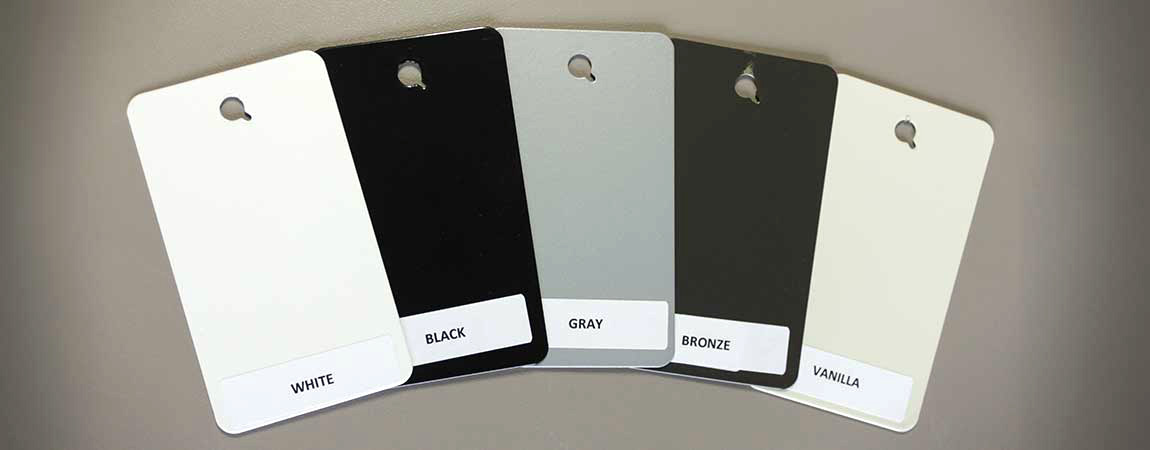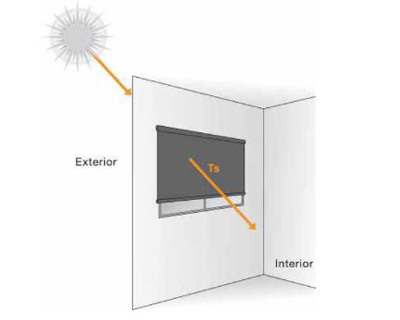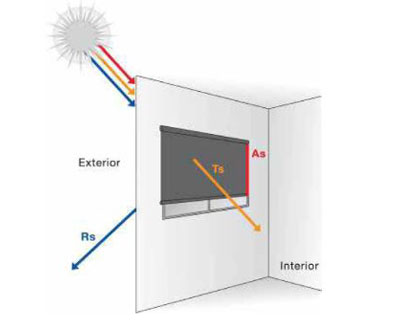Fabric & Finish
Sunshade fabrics of every type and from most manufacturers are available for use in the Dayliter and Skyliter Shading Systems allowing for total flexibility from both a design and functionality standpoint.
Our “standard” fabric selection is the Alkenz 3000 HT Series from Rollease Acmeda and we recommend 3% openness for most applications. For PVC-free fabric requirements we offer several options including Green Screen Revive from Mermet and Infinity 2 from Phifer. For “high performance” applications such as high solar heat gain we recommend Omniascreen from Rollease Acmeda.
Form vs Function
Shading fabrics have traditionally been selected more for aesthetics than performance however today’s fabric technology provides for enhanced performance in a space without sacrificing style.
Optimal daylight, reduced glare and views to the exterior are all features found in today’s fabric offerings regardless of design preference.
Understanding the Energy Performance of Fabric
The key properties for measuring the energy performance of shade fabric are thermal factors, visible transmission and the Solar Heat Gain Coefficient.
Thermal Factors
Thermal factors are comprised of Ts (Solar Transmittance), Rs (Solar Reflectance), and As (Solar Absorption).
Ts (Solar Transmittance) is the proportion of solar energy transmitted through the fabric. A low percentage indicates good filtration of solar energy by the fabric. Low transmittance is necessary for controlling direct sunlight. This ensures appropriate control of glare and visual comfort.
Rs (Solar Reflectance) is the proportion of solar radiation reflected by the fabric. A high percentage means the fabric performs well at reflecting solar energy. High reflectance is good for controlling solar heat gain. It can also result in excessive glare during periods of direct sunlight. High transmission and high reflectance are normally synonymous with light colored fabrics.
As (Solar Absorption) is the proportion of solar radiation absorbed by the fabric. Absorbed solar energy becomes heat. A lower percentage means the fabric absorbs little solar energy. Medium to dark color fabrics will absorb more and thus control visible light better than light colors.
Visible transmission
Tv (Visible Transmission), measures the portion of the sunlight the eye can see - this is affected by the openness and the color.
Solar Heat Gain Coefficient
The shading coefficient is calculated using the thermal factors and represents the percentage of solar heat gain that is transmitted to the interior through the glass and shading system.
Selecting a color
Light colors
- Light colors have a higher Rs value, which means that more heat is reflected. In a warm area, this could result in lowered cooling costs.
- Light colors also have a higher Tv, which means that glare control is not as great as with a darker color. For a room where the focus is on a television or computer screen, this could cause an issue.
- Light colors do, however, preserve natural light and can therefore reduce the need for lamps or overhead lights.
Dark colors
- Lower Tv values provide excellent glare control. A darker color would be a better choice for an entertainment room.
- A higher As means that more light and heat is absorbed by the fabric, so cooling costs will not be reduced as much as with a lighter color. In a very hot area on a window facing the sun during the day, a dark color might not be the best choice.
- Dark colors have better view through during the day, allowing you to see your surroundings.
- Darker colors also show less dirt than light colors, which may be something to consider based upon the location of the shade.
Powder Coat Options
Available colors:
- White
- Black
- Gray
- Bronze
- Vanilla










